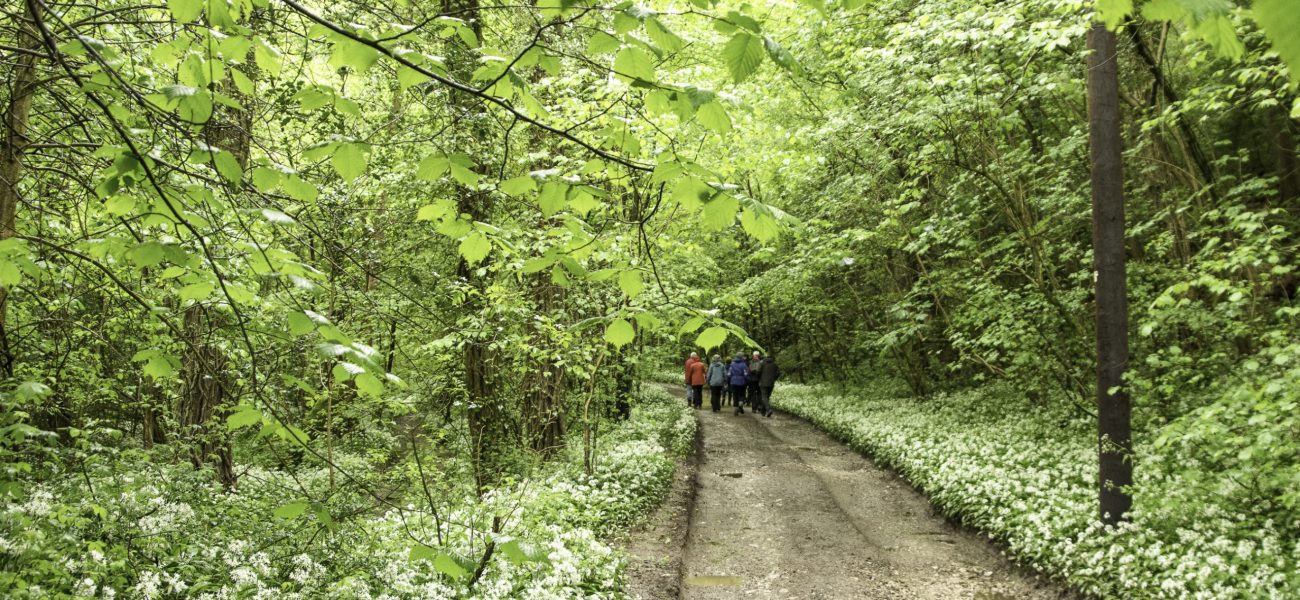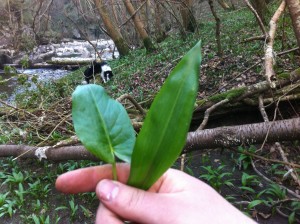Popular Science asked us about Fire Starters
Whether building a fire outdoors or starting one in your wood oven or fireplace, a fire starter makes it easy to get a small flame…

8th March 2013
Every week for the last 10 months or so we have spent time hunting for and gathering wild food as part of our commercial foraging project with Rhug Organic Estate. It has been more than a little enlightening, and has taken me to some corners of my local area I didn’t know existed.
Late on Tuesday afternoon we were looking for young Wild Garlic leaves (also known as Ransomes or Ramsons, properly called Allium ursinum) along the shady banks of one of the rivers bordering the estate. Wild Garlic is one of my favourite wild foods, and a real highlight of the foraging year for me. The smell alone reminds me of dozens of woodland trips and adventures, and there are few plants in the British countryside that have such a strong taste, and as many uses.
Pretty much every part of the plant is edible, but they are best sampled at different times of the year. Right about now (for foraging in North Wales at least, in the southern counties you might be a little further ahead in the season) the young leaves are the best, and perfect for use in soups and similar dishes. As the plants mature the leaves are still good to eat, but the stems and seeds become more interesting too. The stems can be treated like spring onions and add a kick to stir fries (pork is my favourite accompaniment) and the seed heads can be pickled and used later in the year like capers. That’s the key with seasonal wild food – finding a way to preserve it and use it out of season.
Later on, towards the height of summer and a few months beyond you can make use of the bulbs themselves – assuming you can identify them safely and harvest them without damaging the delicate ecosystem they may inhabit.
So picture the scene – three intrepid foragers wandering along the riverbed, wading through the shallows to reach the overhanging banks. The steep Welsh woodland was home to a carpet of green, slightly rubbery leaves with that distinctive smell, somewhere between chives and cultivated garlic. We picked leaves from areas where plants were plentiful, and we could take them safe in the knowledge we were causing no harm. As the light began to wane we talked about how much more we needed – “just one more bag and that’ll be enough” – and hunted for the last few handfuls. As I grasped one clump and gently pulled a slight difference in the texture of one of the leaves made me stop and check – what was different? I opened my hands out and laid the handful of garlic leaves out on the soil and found the unwanted extra – a member of the Araceae family. I discarded the leaf, and those that I had picked alongside it, as the Arum maculatum – otherwise known as Lords and Ladies or Cuckoo-pint – is toxic. Well, it is and it isn’t – let me explain…

Arum aculatum is very common in the U.K., and can be found in most native woodlands and even gardens. In the Spring its leaves have a distinctive shape, with two pointed lobes at the base and a narrow taper at the tip. Towards Summer its flower forms, a white candle-like leaf with a central spire. In the Autumn it becomes a tight cluster of red and orange berries – which are the bit you REALLY want to avoid. They contain oxalates of saponins which have tiny, needle shaped crystals that cause irritation to and inflammation of the nose, lips, mouth, throat, skin and cause symptoms not unlike that of a severe allergic reaction or anaphylaxis. Arum poisoning, although rare, is the most common type of plant poisoning presented at A & E departments.
So it’s poisonous then? Yes – I strongly advise you to leave it well alone. The root was traditionally used to make a beverage (sold as something called Portland Sago), commonly drunk before the arrival to Europe of tea and coffee. If prepared incorrectly it can be highly toxic so, once again, STAY AWAY.
We have collected our Wild Garlic leaves and walk out through the fields back to the road, with a light mist descending and a view towards the Clwydian Range. I started thinking about the Arum leaf. I had identified it straight away and discarded it – but what if I had been a novice forager, taking my first steps into finding wild food for myself and trying something new – would I have discounted the Arum leaf, or would I have assumed that because it was growing up through the other leaves that it was part of the same plant? They do look similar in colour and size, and although the shape is quite different that would have been less clear if only the top half of the leaf had been picked.
I’m uncertain of the toxicity of a single Arum maculatum leaf, but I’m not willing to chance it. Something I repeat over and over with the students on our Foraging and Wild Foods courses is that it is not worth taking any chances – if you aren’t sure what it is then leave it there, and come back with more guidebooks or someone else who knows more than you do. Foraging brings you new flavours and the thrill of finding something unusual and exotic in somewhere familiar and ordinary – but it isn’t worth risking death or disability over.
On the up side, at least a rucksack of Wild Garlic makes you virtually vampire-proof.
A Mountain Leader with over a decade of experience across the UK and overseas, Richard is our Lead Instructor and a partner in Original Outdoors. He is a specialist in temperate wilderness skills and the wild foods of the British Isles, and also works as a consultant for various brands and organisations. Richard lives in North Wales.
A Life More Wild is the philosophy which underpins everything we do.
It encompasses practical skills, personal development, community learning and a journey to live more intentionally.
Whether building a fire outdoors or starting one in your wood oven or fireplace, a fire starter makes it easy to get a small flame…
In Tips From An Instructor we share useful snippets of knowledge to make outdoor skills that little bit easier. In this episode Richard explains why…
If you plan on transplanting snowdrops from one location into another, the best time of year to do this is as the leaves are fading…
Snowdrops are a beautiful, with their nodding white bell shaped flowers which secret away the intricately green lined centre underneath.
